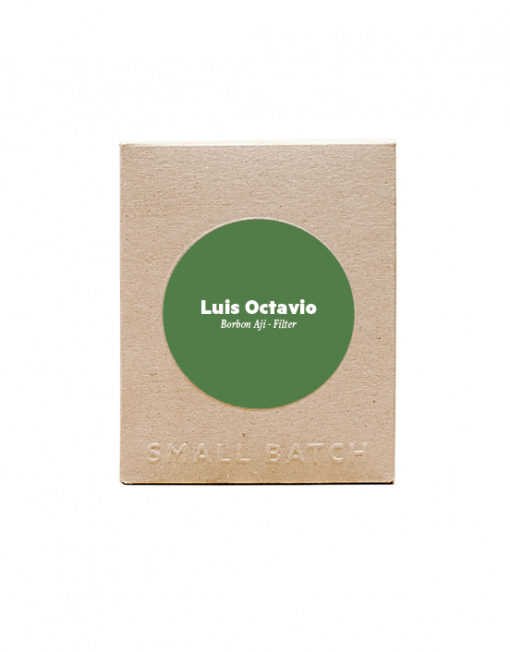Luis Octavio Titimbo – Borbon Aji Filter
$26–$90
Luis Octavio Titimbo – Borbon Aji Filter
$26–$90
-
-
- Producer Luis Octavio Titimbo
- Attributes borbon aji
- Origin La Esperanza village, near Bruselas, Southern Huila, Colombia
- Profile Super juicy and sweet, with spiced cherry & cranberry
We first met Luis Octavio Titimbo in 2016, and while we’ve been buying coffee from him continually since then, we’ve been increasingly featuring his coffee over this last 18 months – the result of both of new plantings (pink borbon and borbon aji varieties) and of enhanced fermentation practices.
Luis comes from a coffee growing family- his father was a coffee producer, and his in-laws are coffee producers – and he says, “yo siempre he sido del café” – I’ve always been a coffee person!
Luis works on his two parcels outside of Bruselas, Huila at 1760 and 1780 masl. Across the two parcels (one a patrimonial inheritance and the other his partner’s inheritance from her family) there are 5,5000 caturra trees, 2,000 variedad Colombia and 4,500 pink borbon trees, and now around 5300 borbon aji (with more seedlings sewn over the last few years, not yet in production). He also has some borbon sidra, and ombligón (gifted from fellow Guacharos member Ildefonso Cordoba).
This lot of Borbon Aji hails from his 2500 established plants, which Luis grows under the shade of native cachingo, at an altitude of around 1760 metres.
He has the tall version of this variety, which despite appearances, we now know to not be a borbon after all. ( The variety gained its name as producers found that cherries from these trees had an aroma and colour reminiscent of chilli (aji = “chilli” in Spanish). Recent DNA testing in fact shows that it is in fact genetically distinct from ancestor seeds carried to the Americas centuries ago and is in fact a newly discovered Ethiopian Landrace, not a borbon at all.)
Luis says that borbon aji requires special management to maintain constant production- he has managed the trees with different pruning tests to see how the variety reacts. Because borbon aji produces year-round with consequentially heightened nutrition needs, Luis fertilizes these trees four times a year as opposed to the three applications received by other varieties.
While Luis is currently using conventional fertilizers, he is thinking ahead to a vermiculture project to be able to return more organic matter to his soils, and he has begun keeping bees to enhanced pollination ratios in his coffee trees (increasing his yields) and of course also for the sake of the honey.
This January 2025 purchase was first fermented in cherry in bags for 24 hours, then (still in cherry) in drums for another 24 hours of low-oxygen fermentation, after which the cherries were de-pulped and the seeds fermented in drums or hermetically sealed bags for between 65 and 70 hours.
-
-
Pricing transparency: we paid Luis $4,200,000 pesos per carga of parchment via our Colombian entity Shared Source SAS in January 2025.
- Roasted for filter brewing. We ship coffee as whole beans by default, if you need your coffee ground, please let us know at the checkout.

